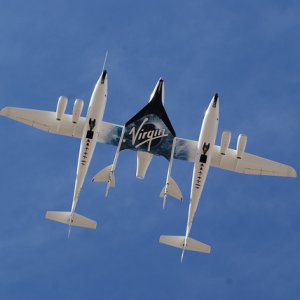5 New Megatrends for the Future of Aerospace

STORY INLINE POST
In many groups with different backgrounds, I often get the same question: What’s coming in the future of aerospace? After explaining why aerospace R&D cycles take so much money and time to hit the market, I usually come to the same five trends in development. It is still hard to guess the future as to what they will become, but at least I can tell you that there is a big number of resources being dedicated to their development. They have also captured the attention of the market and of potential customers.
Spaceflight
Whether it is to put satellites in orbit, defense purposes or the new trend of space tourism, spaceflight aircraft are being developed with a strong focus on lowering costs and reusable rockets and other components. The big trend is democratizing space and after decades of almost no trips, we are seeing a large increase in the number of launches from different regions of the world. The New Space era is already here, and it comes with new industries, such as mining or housing on the moon and even space art. Satellite constellations will become increasingly common and with it comes an improvement in communications, Earth observation and technology development. All of that deserves an article by itself, but the point is that at the center of it all is human spaceflight as the pillar.
Human space flight it still too expensive for 99 percent of the world’s population but the decrease in costs is exponential to the point that travel today is one-tenth of what it was a couple of decades ago. The technology on spacecraft evolved drastically once private capital was able to develop NASA’s knowledge and processes. New and more efficient propulsion systems, new technology and bases for take-off and landing changed in a way that was not imaginable 20 years ago. In a way, the dream of flying to space has always existed among humans, but only now has the technology enabled the adventure of humans going into space.
My view is that we will see space soon as an extension of Earth. We are still amazed by commercial travelers going into space. At some point, it will become normal and travel frequencies will improve and grow.
Supersonic Aircraft
Some decades ago, the Concorde made history as the fastest commercial aircraft in service at a supersonic speed. I firmly believe it was a great product that was too advanced for its time, which signed its death sentence. Efficiency was missing in terms of fuel consumption, maintenance costs were skyrocketing as technology, materials and components were exotic, to say the least. Airlines and the commercial aviation market were not ready for such a cost structure. However, it led to good lessons learned that are now being applied by new companies attempting to make supersonic commercial flight a reality again. Again, technological advancements are opening the possibility of developing new aircraft. New materials, new engines that are way more efficient and less noisy, new systems, and new generation fly-by-wire enable new products and some are already on the way to certification.
From lessons learned, the new products will be smaller and there will be fewer passengers per flight but the market conditions are ripe for such business models. Some airlines like United have already signed letters of intent to become the launch customer of Boom Aerospace’s Overture. They are even marketing already at their operational hubs. Space travel costs are exponentially reduced and, in this case, more people will have access to this kind of travel, although it is going to be mainly positioned as a business class category.
In my opinion, this time, supersonic travel will last longer than the Concorde era did. However, I do believe that until technology is really accessible and costs really cut down to be available for average passengers, we will not see many new companies. It is still a very small market to allow too many players. Well done for those who will be the incumbents.
Unmanned Aircraft Systems (UAS)
The UAS was originally and mostly developed to meet the needs of military air forces for surveillance below radar and without exposing humans to death from enemy attacks. But the future is as promising as it is uncertain. These flying systems are not a big development in terms of aerodynamics or materials. But the convergence of technology feeding all kinds of systems, such as batteries, GPS, radars, and sensors, is what makes the usage of these devices flexible. With flexibility of usage comes a new generation of systems designed for specific purposes. Once used exclusively by military forces, now they have applications in logistics, Earth observation, defense, agriculture, search, and many others.
One of the big challenges we need to solve soon is the regulatory framework that will govern the usage of UAS for different purposes. Although it will provide good experiences in many fields, defining the regulations will not be easy and whoever takes the decision must find the balance between safety and ease of operation.
eVOTL
An electric vertical take-off and landing (eVTOL) aircraft uses electric power to hover, take off, and land vertically. This technology came about thanks to major advances in electric propulsion (motors, batteries, fuel cells, electronic controllers) and the growing need for new vehicles for urban air mobility (air taxis). Examples are being developed by aircraft companies, such as Boeing, Airbus, Embraer, Honda, Toyota, Hyundai and NASA, directly or by funding some smaller companies that have an interesting technological approach. More and more companies are coming into the market and IPOs are common among those in the product development phase.
Again, regulations should be smart and promote safe operations. Infrastructure to create vertiports is essential. It is not useful at all to have these aircraft if there is no space available for landing. I still do not know where this technology will take us, but one certain fact is that the days when you raise your eyes and see no eVTOL devices will change very soon. I am impressed by the level of investment in these products, and by who is funding them, starting with the big aerospace OEMs. They obviously know something I do not.
Bio-Fuel
Commercial aviation fuel (CAF) is a hydrocarbon, almost exclusively obtained from the kerosene fraction of crude oil. Two types of fuels are used in commercial aviation: Jet-A and Jet A-1. Fuel specifications for aviation fuels are very stringent. For aviation, advanced liquid biofuels are the only low-CO2 option for substituting kerosene, since a high, specific energy content is required. Gaseous biofuels and electrification are challenging for air transportation, especially for long-distance flights. Advanced biofuels for aviation should use sustainably produced feedstocks to produce a fuel that can be considered as a substitute for commercial aviation fuel, while not consuming valuable food, land and water resources.
Aviation is responsible for about 2 percent of CO2 emission induced by humans and about 12 percent of CO2 emissions in the transport sector. Since 2012, flights entering the EU are required to pay for CO2 emissions due to the EU Emission Trading System (ETS). Sustainable aviation fuels are being discussed as an important way to reduce aviation's greenhouse gas emissions. The aviation sector has voluntarily committed itself to CO2-neutral growth from 2020 onward, and alongside efficiency-boosting measures, sustainable aviation fuels are a key building block. The estimated current production of sustainable aviation fuels is around 0.05 percent of current aviation fuel consumption.
I am sure many people reading this article will agree that these five trends will mark an important milestone in the history of aviation. I am also convinced that many people will disagree and will identify other aerospace incumbents. But if there is one thing we need to agree on, it is that technology, materials, and systems are evolving at an exponential rate. And with that speed of growth usually comes many opportunities. Hopefully, we really learned the lesson given by the past. At the same time, we need to keep evolving our products and process for the future generations. New business models will emerge, some others will have to be redesigned and re-imagined. Sadly, some will disappear. But in any case, all these developments challenge our technological capacity. At the same time, it is very encouraging to witness new categories of products and technology in the aerospace industry.
























